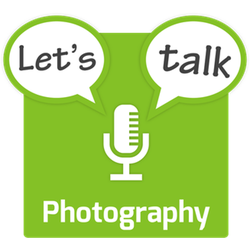- Bart Busschots (host) – @bbusschots – Flickr
Bart continues his series explaining photographic terms and phrases in this solo show all about ‘ISO’ (or film speed). This is the third and final part of a mini-series on the so-called exposure triangle.
While this podcast is free for you to enjoy, it’s not free for Bart to create. Please consider supporting the show by becoming a patron on Patreon.
Reminder – you can submit questions for future Q & A shows at http://lets-talk.ie/photoq
Show Outline
- Level of light-sensitivity of the film/sensor
- ISO is a complete misnomer — actually Film speed (en.wikipedia.org/…)
- ISO is used in just about every camera menu, and in renderings of EXIF data, so it’s completely ubiquitous, and has arguably become the correct term, even if it’s not
- ISO is actually a truncation of the standard system for measuring film sensitivity, the ISO 5800:2001 standard. ISO as in International Organization for Standardization (en.wikipedia.org/…).
- The third leg of the exposure triangle
- Exposure — how long the light gets to hit the film/sensor
- Aperture — how big of a hole the light reaches the film/sensor through
- ISO — how much of an effect each photon of light has on the recorded image
- Less obviously controllable than the other two
- With film, ISO is a property of the chemistry of the film, so changing ISO means changing film
- Digital cameras made ISO as controllable as exposure and aperture
- At the lowest hardware level digital sensors actually only have a single fixed ISO just like film — the sensor’s native ISO
- The ISO setting controls the gain applied to the raw output from the sensor by the camera — for ISOs below the native you divide by a given factor, for ISOs above you multiply by a given factor
- When there is too much or too little light, the signal to noise ratio goes up, so when you apply positive or negative gain, that noise gets amplified, and you get a noisy image.
- The closer your ISO setting is to the sensor’s native ISO, the less noise you’ll get
- It’s well known that shooting at high ISOs results in noisy images, but the same is true the other way, large negative gains will also be noisy, so your camera’s lowest ISO setting will not be its best.
- Every sensor has a sweet spot and a range you personally find acceptably noise-free — you need to take the time to get to know your own camera(s)
- Like the other two legs of the exposure triangle, each click of the ISO dial on a modern DSLR is equivalent to one-third of a stop.

